
The Office of Strategic Services (OSS) was an intelligence agency of the United States during World War II. The OSS was formed as an agency of the Joint Chiefs of Staff (JCS) to coordinate espionage activities behind enemy lines for all branches of the United States Armed Forces. Other OSS functions included the use of propaganda, subversion, and post-war planning.

Merrill’s Marauders (named after Frank Merrill) or Unit Galahad, officially named the 5307th Composite Unit (Provisional), was a United States Army long range penetration special operations jungle warfare unit, which fought in the Southeast Asian theater of World War II, or China-Burma-India Theater (CBI). The unit became famous for its deep-penetration missions behind Japanese lines, often engaging Japanese forces superior in number.

The Burma campaign was a series of battles fought in the British colony of Burma. It was part of the South-East Asian theatre of World War II and primarily involved forces of the Allies against the invading forces of the Empire of Japan. Imperial Japan was supported by the Thai Phayap Army, as well as two collaborationist independence movements and armies. Nominally independent puppet states were established in the conquered areas and some territories were annexed by Thailand. In 1942 and 1943, the international Allied force in British India launched several failed offensives to retake lost territories. Fighting intensified in 1944, and British Empire forces peaked at around 1 million land and air forces. These forces were drawn primarily from British India, with British Army forces, 100,000 East and West African colonial troops, and smaller numbers of land and air forces from several other Dominions and Colonies. These additional forces allowed the Allied recapture of Burma in 1945.
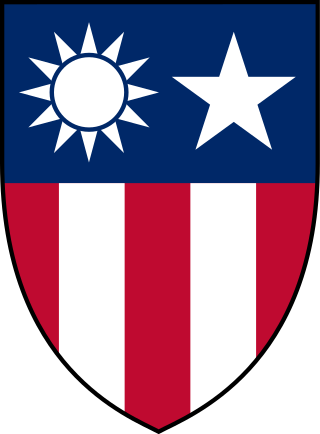
China Burma India Theater (CBI) was the United States military designation during World War II for the China and Southeast Asian or India–Burma (IBT) theaters. Operational command of Allied forces in the CBI was officially the responsibility of the Supreme Commanders for South East Asia or China. In practice, U.S. forces were usually overseen by General Joseph Stilwell, the Deputy Allied Commander in China; the term "CBI" was significant in logistical, material and personnel matters; it was and is commonly used within the US for these theaters.

Roger Hilsman Jr. was an American soldier, government official, political scientist, and author. He saw action in the China-Burma-India Theater of World War II, first with Merrill's Marauders, getting wounded in combat, and then as a guerilla leader for the Office of Strategic Services. He later became an aide and adviser to President John F. Kennedy, and briefly to President Lyndon B. Johnson, in the U.S. State Department while he served as Director of the Bureau of Intelligence and Research in 1961 to 1963 and Assistant Secretary of State for Far Eastern Affairs in 1963 to 1964.
Carl Frederick Eifler was a U.S. Army officer best known for having commanded Detachment 101, which served behind the enemy lines in Japanese-occupied Burma during World War II. He helped stand up 13 army reserve detachments outside major universities to preserve the expertise and knowledge of the returning GIs.

William Ray Peers was a United States Army general, who is most notable for presiding over the Peers Commission investigation into the Mỹ Lai massacre during the Vietnam War.
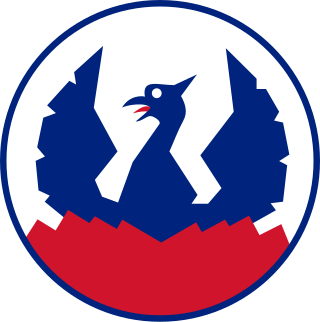
Force 136 was a far eastern branch of the British World War II intelligence organisation, the Special Operations Executive (SOE). Originally set up in 1941 as the India Mission with the cover name of GSI(k), it absorbed what was left of SOE's Oriental Mission in April 1942. The man in overall charge for the duration of its existence was Colin Mackenzie.
A Joint Intelligence Center (JIC) is a focal point for military intelligence gathered by different intelligence agencies and administered by the Defense Intelligence Agency (DIA). The intelligence center of the joint force headquarters. The joint intelligence center is responsible for providing and producing the intelligence required to support the joint force commander and staff, components, task forces and elements, and the national intelligence community.
V Force was a reconnaissance, intelligence-gathering and guerrilla organisation established by the British against Japanese forces during the Burma Campaign in World War II.
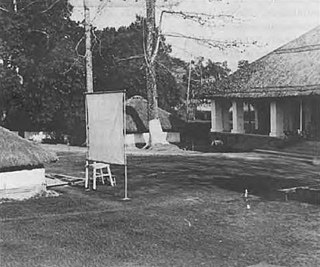
Detachment 101 of the Office of Strategic Services operated in the China-Burma-India Theater of World War II. On 17 January 1956, it was awarded a Presidential Distinguished Unit Citation by President Dwight Eisenhower, who wrote: "The courage and fighting spirit displayed by its officers and men in offensive action against overwhelming enemy strength reflect the highest tradition of the armed forces of the United States."
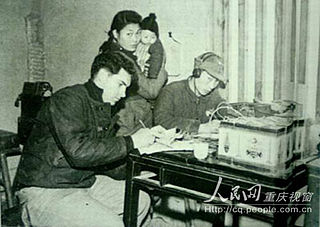
The Sino-American Special Technical Cooperative Organization, also known as the Sino-American Cooperative Organization (SACO), was an organization created by the SACO Treaty signed by China and the United States in 1942 during the Second World War. It established a mutual intelligence gathering entity in China between the respective nations against Japan. It operated in China jointly along with the Office of Strategic Services (OSS), America's first intelligence agency and forerunner of the CIA while also serving as joint training program between the two nations.
National governments deal in both intelligence and military special operations functions that either should be completely secret, or simply cannot be linked to the sponsor. It is a continuing and unsolved question for governments whether clandestine intelligence collection and covert action should be under the same agency. The arguments for doing so include having centralized functions for monitoring covert action and clandestine HUMINT and making sure they do not conflict, as well as avoiding duplication in common services such as cover identity support, counterespionage, and secret communications. The arguments against doing so suggest that the management of the two activities takes a quite different mindset and skills, in part because clandestine collection almost always is on a slower timeline than covert action.
The Strategic Services Unit was an intelligence agency of the United States government that existed in the immediate post–World War II period. It was created from the Secret Intelligence and Counter-Espionage branches of the wartime Office of Strategic Services.
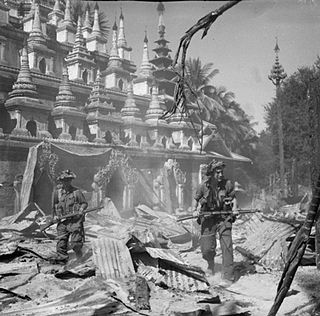
The Burma campaign in the South-East Asian Theatre of World War II was fought primarily by British Commonwealth, Chinese and United States forces against the forces of Imperial Japan, who were assisted by the Burmese National Army, the Indian National Army, and to some degree by Thailand. The British Commonwealth land forces were drawn primarily from the United Kingdom, British India and Africa.
The history of guerrilla warfare stretches back to ancient history. While guerrilla tactics can be viewed as a natural continuation of prehistoric warfare, the Chinese general and strategist Sun Tzu, in his The Art of War, was the earliest to propose the use of guerrilla warfare. This directly inspired the development of modern guerrilla warfare. Communist leaders like Mao Zedong and North Vietnamese Ho Chi Minh both implemented guerrilla warfare in the style of Sun Tzu, which served as a model for similar strategies elsewhere, such as the Cuban "foco" theory and the anti-Soviet Mujahadeen in Afghanistan. While the tactics of modern guerrilla warfare originate in the 20th century, irregular warfare, using elements later characteristic of modern guerrilla warfare, has existed throughout the battles of many ancient civilizations.
The head of the Office of Strategic Services (OSS), William Donovan, created the X-2 Counter Espionage Branch in 1943 to provide liaison with and assist the British in its exploitation of the Ultra program's intelligence during World War II. A few months before, Donovan had established a Counterintelligence Division within the Secret Intelligence Branch of the OSS but rescinded this order upon development of the X-2. The X-2 was led by James Murphy, whose branch would have the power to veto operations of the Special Operations and Secret Intelligence Branches without explanation. Donovan modeled the Counter Espionage Branch on British Counter Espionage. With the creation of the X-2 Branch, the British insisted that it follow British security procedures to maintain the secrecy of Ultra. The X-2 established separate lines of communication for itself as a self-contained unit. By the end of World War II, the X-2 had discovered around 3,000 Axis agents.
Y Force was the South East Asia Command designation given to Chinese National Revolutionary Army forces that re-entered Burma from Yunnan in 1944 as one of the Allies fighting in Burma Campaign of World War II. It consisted of 175,000 troops divided into 15 divisions.

Dean Brelis was a journalist who worked as a foreign correspondent for NBC, CBS and Time magazine and wrote novels and nonfiction books. He was born Constantinos Christos Brelis in Newport, Rhode Island to Greek immigrant parents. He enlisted in the Army in 1942 and was assigned to work in military intelligence for the OSS Detachment 101 under the command of William R. Peers, first as a sergeant and then as a lieutenant, during 1944 and 1945. While stationed in Burma, he received a Bronze Star.
CIA activities in Myanmar were operations by the Central Intelligence Agency and before that the Office of Strategic Services (OSS) from World War II onward in the nation formerly known as Burma. There appears to be somewhat limited information concerning CIA operations in Myanmar, as compared to other nations, such as Vietnam.












